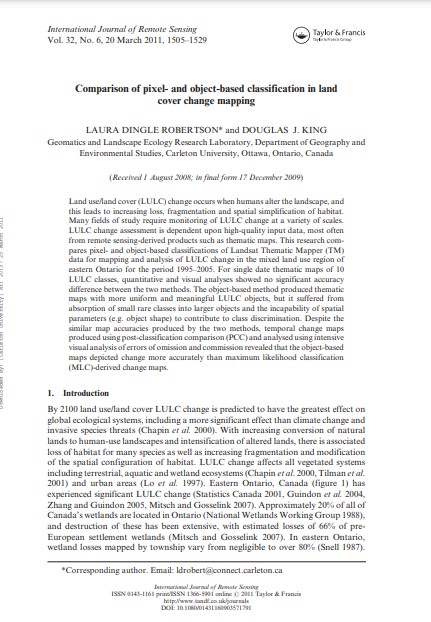Comparison of pixel- and object-based classification in land cover change mapping
Bosque Modelo:
Eastern Ontario
Temática:
Gestión forestal
Tipo de documento:
Artículo científico
Resumen
Land use/land cover (LULC) change occurs when humans alter the landscape, and this leads to increasing loss, fragmentation and spatial simplification of habitat. Many fields of study require monitoring of LULC change at a variety of scales. LULC change assessment is dependent upon high-quality input data, most often from remote sensing-derived products such as thematic maps. This research compares pixel- and object-based classifications of Landsat Thematic Mapper (TM) data for mapping and analysis of LULC change in the mixed land use region of eastern Ontario for the period 1995–2005. For single date thematic maps of 10 LULC classes, quantitative and visual analyses showed no significant accuracy difference between the two methods. The object-based method produced thematic maps with more uniform and meaningful LULC objects, but it suffered from absorption of small rare classes into larger objects and the incapability of spatial parameters (e.g. object shape) to contribute to class discrimination. Despite the similar map accuracies produced by the two methods, temporal change maps produced using post-classification comparison (PCC) and analysed using intensive visual analysis of errors of omission and commission revealed that the object-based maps depicted change more accurately than maximum likelihood classification (MLC)-derived change maps.
Información Bibliográfica
Autor:
Laura Dingle Robertson & Douglas J. King
Revista:
International Journal of Remote Sensing
Año:
2011
N°:
6
País :
Canadá
Páginas:
1505 - 1529
Volumen:
32
Idioma:
Ingles
Palabras claves
Model forest, canada, Land-use





